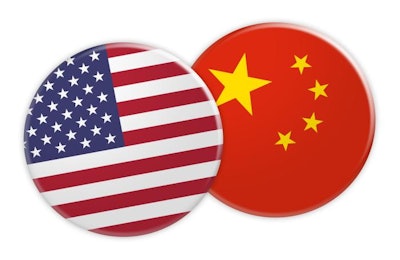
Phase One of a trade deal between the United States and China was signed by both parties on January 15, but many questions have been asked since the signing ceremony was held.
We know that China has agreed to purchase between $40 billion and $50 billion worth of U.S. agricultural goods annually, and with China lifting its avian influenza-related ban on U.S. poultry in November, we know that the poultry industry is set to get a piece of that pie.
The flow of poultry products to China has already begun, according to a Time report, stating that 23.94 tons of U.S. chicken paws cleared Chinese customs the day before the first phase of the U.S.-China deal was signed.
While details involving future shipments of U.S. poultry products to China remains unknown, a document on the U.S. Trade Representative (USTR) website, offers a few insights. Here are some:
Market overview
The federal document noted that as incomes rise in China, demand for protein products increases as well. “Chinese demand for imported beef, pork and poultry is growing at a rapid rate, made more acute due to domestic pork supply constraints in China as a result of the ongoing outbreak of African swine fever (ASF),” the document stated.
The document also highlighted China’s reopening of its market to U.S. poultry in November. Presently, the Administration of Customs of the People’s Republic of China (GACC) has listed 349 U.S. poultry plants eligible to export to China. Chinese importers, at the same time, can now obtain import licenses to start placing orders.
Key achievements for U.S. with trade deal
Related to the passage of the deal’s first phase, the U.S. government highlighted the following achievements related to the poultry industry:
- The finalization of a protocol for the regionalization of poultry diseases, thereby ensuring that future trade disruptions will be minimized and solely based on internationally-accepted practices
- The full lifting of the ban on other poultry commodities, including live birds
- Abiding by World Organisation for Animal Health (OIE) standards for international trade of poultry products
- Addressing the backlog of meat and poultry facilities awaiting approval and acceleration of the process for future applicans by publishing within 20 business days of receipt the updated list of U.S. Department of Agriculture (USDA)-approved facilities
- Permitting, consistent with USDA directives, the use of replacement certificates
- Utilization of the USDA Public Health Information System to facilitate the use of electronic transmission of export health certificates, greatly reducing the workload for exporters and regulators
Audits and inspections
Related to audits and inspections, the USTR document states: “China has agreed to not require audits or inspections of U.S. meat and poultry facilities as part of any facility registration process.”
However, it added that in accordance with international standards, China can perform risk-based audits in coordination with USDA’s Food Safety and Inspection Service (FSIS).
China may also inspect risk-based selections of shipments of U.S. meat and poultry at ports of entry, and refuse importation of shipments after inspections determine the shipments are in violation of applicable food safety import requirements.
Under the agreement, China is expected to notify the U.S. if it notices a “significant, sustained or recurring pattern of non-conformity by a particular facility and if it intends to restrict imports from the facility. Should such incidents occur, the two countries will work together to resolve the issues.


















